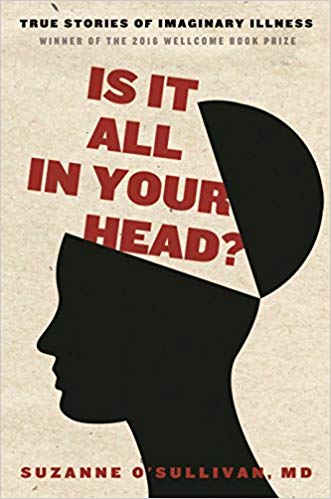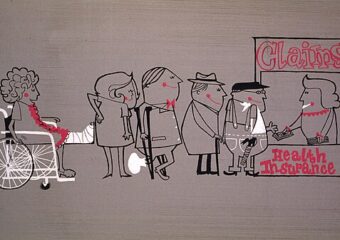Suzanne O’Sullivan
Other Press
New York
2016
291 pages
According to the Art:
Through a series of astonishing case studies from her neurology practice, O’Sullivan shows what psychosomatic illness looks like and describes how it works. She avers that illnesses can arise from pathophysiological causes or psychosomatic mechanisms, and so diagnosticians should be sure to discern which is at work in any given case as much to prevent harm as to effect a cure.
Synopsis:
Suzanne O’Sullivan is a neurologist in the British National Health Service. She has a particular interest in psychosomatic illnesses, and in this book, she covers what she has learned about them. O’Sullivan provides these learnings mostly from clinical experience rather than as findings from empiric studies on psychosomatic illnesses.
Each chapter is built around one or more case studies that focus on particular psychosomatic illnesses, and include historical perspectives and various theories that might explain why they occur.
The cases O’Sullivan uses presented themselves as seizures, paralysis, urinary tract troubles, generalized and localized pain, gastrointestinal problems, fatigue, blindness, and dystonia. Patients sometimes came to her with pre-determined diagnoses such as epilepsy, Lyme disease, chronic fatigue syndrome, myalgic encephalomyelitis, and fibromyalgia among others. O’Sullivan is emphatic that psychosomatic illnesses are not just any presentation of illness that cannot be linked to a pathological basis. Psychosomatic illnesses arise from “the subconscious mind [that] reproduces symptoms that make sense to the individual’s understanding of how a disease behaves.” (p. 83) Illness presentations that are feigned or self-inflicted (e.g., Munchausen’s syndrome) are not psychosomatic illnesses in O’Sullivan’s view.
Each chapter delves into some particular aspect of psychosomatic illness relevant to the case study. These include history (e.g., role of the uterus in hysteria), mechanisms at work (e.g., conversion reactions, dissociation), triggers (e.g., stress, loss, personality traits), factors (e.g., previous illness experiences), illness behavior disorders (e.g., associating illness to benign physical sensations), and the higher incidence seen among females. Though O’Sullivan teases out various characteristics and workings of psychosomatic illnesses, she admits that they remain vexing to clinicians because, “almost any function of the body can be affected in almost any way.” (p. 170)
Analysis:
Patients who present with psychosomatic illnesses almost always frustrate health care providers. Their illnesses can’t be real, the reasoning goes, because their symptoms can’t be linked to an established pathophysiological cause. They are often given lower priority by clinicians as a result, and are even, at times, marked as cases to avoid or given disparaging labels. O’Sullivan is having none of this. In her view, people with psychosomatic illnesses can suffer every bit as much people with illnesses stemming from pathophysiological causes and they can be helped just as much.
To O’Sullivan, people present with illnesses from either pathophysiological causes or psychosomatic causes, and neither cause should be privileged over the other. But, sorted out they must be, because distinctly different approaches are used based on the distinction between the two. Seizures due to epilepsy, for example, are best managed with anti-epilepsy drugs whereas seizures due to psychosomatic causes are best managed with psychiatric and behavioral methods. O’Sullivan makes the point again and again that failing to discern psychosomatic illnesses not only results in failure to find resolutions for them, but also exposes patients to harm from biomedical interventions that would never work (e.g., drugs, surgery). She goes further to say that just being mindful of psychosomatic causes of illnesses will not be sufficient. Required also is the right mix of empathy for the patients whose problems generate psychosomatic symptoms, the courage to identify health problems as psychosomatic, and firmness to resist patients’ demands to attach disease labels to their illnesses.
Also:
A version of this post is on the NYU Literature, Arts and Medicine Database.



